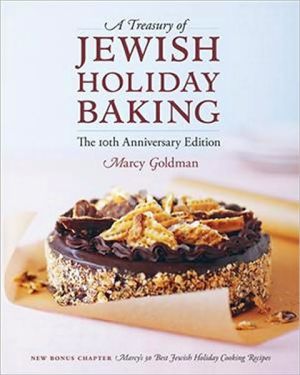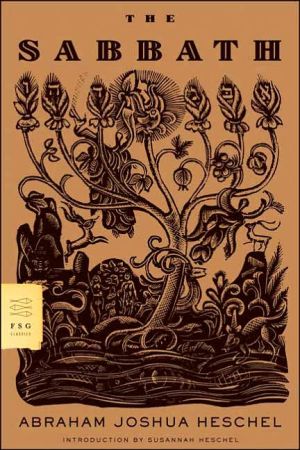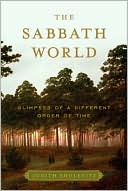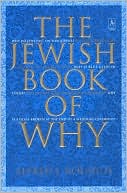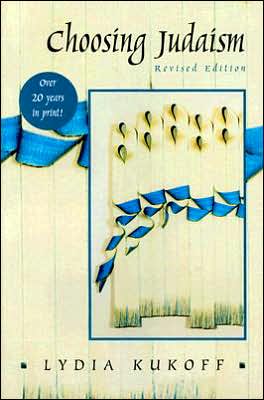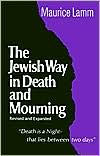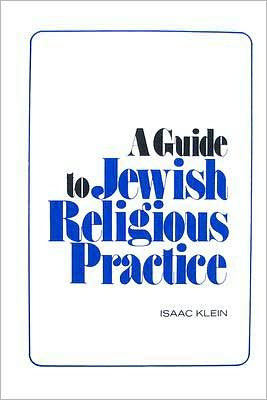A Treasury of Jewish Holiday Baking
The updated edition of a kitchen classic, now with 30 new recipes for favorite savory holiday dishesKeep age-old holiday traditions alive and start delicious new ones with A Treasury of Jewish Holiday Baking, nominated for a Julia Child Cookbook Award. Professional pastry chef and BetterBaking.com creator, Marcy Goldman has lovingly assembled a comprehensive collection of easy-to-follow, time-tested recipes from one of the world's great baking traditions, from sweet raisin challah for Rosh...
Search in google:
Here at last is the first lovingly assembled, comprehensive collection of delicious, fail-proof baked goods--for the Jewish holidays and throughout the year--compiled and interpreted by Marcy Goldman, a professional baker who is also a professional writer on food. Even if we don't have time to bake on a regular basis, holidays are something different--special occasions that encourage us to pull out the cake pans and present our family and friends with a gift of homemade love. And this is particularly true of the Jewish holidays, which are so centrally focused on special foods--and, of course, special desserts.From the round raisin challah that symbolizes the sweetness and continuity of life for Rosh Hashanah, the Jewish New Year, to triangular, jam-filled hamantaschen for Purim, to a Chanukah dreidel cake, to the best flourless Passover cakes in the world, Marcy Goldman offers recipes that are traditional as well as those with an innovative flair.Jewish or European-style baked goods--coffee cakes, strudels, cheesecakes, rugelach--are so universally popular that they have become as American as apple pie, and now, with A Treasury of Jewish Holiday Baking, every home baker will have access to the secrets of how to make them. As if she were a mother passing down techniques to her own children, Marcy Goldman's voice is warm, encouraging, and inviting, as well as authoritative, clear, and knowledgeable. She provides not only detailed instructions that yield delicious baked goods every time, but also a wealth of information on holiday customs and history.Here is, indeed, a treasury to be welcomed by those whogrew up with such recipes, those who are seeking to reestablish traditional holiday celebrations in their own home, and those who simply want to know the secrets for producing a wide range of delicious cakes, pastries, and pies.From the Hardcover edition. Publishers Weekly Goldman's cheerful cookbook provides recipes for all sorts of baked goods, from traditional Jewish fare (Delicatessen-Style Classic Sour Cream Coffee Cake) and treats for specific holidays (an Etrog Cake for Sukkot) to others that are just plain good (New Wave Chocolate Tunnel Cake). A chapter on breads contains recipes for both New York-Style Water Bagels and Montreal Bagels, as well as Pumpernickel Cranberry Rolls. This book will satisfy any challah devotee: a chapter on Shabbat offers Traditional Friday Night Challah and "This Tastes Like Cake" Fresh Yeast Sabbath Challah (Goldman likes wordy, exclamatory names). A chapter on Rosh Hashanah boasts cunning New Year's Sweet Challah Miniatures and a New Year's Apple Challah. Many desserts, like a Blitz Cherry Cake, are easy and fast. Others, like Pomegranate and Sour Cherry Mandelbrot, incorporate unusual ingredients without getting too wacky. The true test of the Jewish baker, of course, is Passover, and Goldman provides a wealth of the flour-free inventions, notably My Trademark, Most Requested, Absolutely Magnificent Caramel Matzoh Crunch, Passover Rich Chocolate Genoise and Buttercream Roll, and Mock Chestnut Torte. (Sept.)
1. BREAKING BREAD\ \ Celebrating the Jewish Seasons with Flour and Yeast\ \ \ \ Di libeh iz zis, mit broit iz zi besser.\ "Love is sweet, but it's nicer to have bread with it."\ \ A groiser oiven--a kleine challah!\ "A big oven--a small loaf!"\ \ --yiddish proverbs\ \ \ \ Jewish Bread at the Table\ \ As far back as I can remember, bread has played an important role in my home. Store-bought sliced challah, onion rolls, pungent rye bread, dense, rustic Russian black breads with cracked wheat, and sour, seeded corn breads were always to be found on our kitchen counter. Bagels brought back from a pilgrimage to our favorite, legendary shop, never lasted very long. It seemed the same in the homes of my friends and relatives. Households and families differed in many ways, but in the ways of bread we were the same. A slice of challah with soft butter was a typical snack. Smooth-as-silk chopped liver topped with caramelized onions, on a small slice of rye bread made a meal. Onion rolls or pletzels hastily filled with a slice of deli salami were easily devoured by my brothers and myself. Always, bread figured in some way in the meal.\ \ Jews, along with many cultures throughout the world, revere bread. The simplest meal is made special by the presence of a humble loaf. Bread is so special that there is a Hebrew blessing over all breads. And though the blessings on Friday night over the wine and candles precede the blessing over the challah, it is only after the prayer for the bread has been performed does the meal begin.\ \ The luncheon that follows a joyous kiddish after a brith, starts with the blessingover the bread. A bar mitzvah feast waits until the rabbi blesses the ceremonial challah. A couple in a new home receives a first gift of a loaf of bread and some salt--edible symbols for mazel, or good luck, in the new abode. Bagels, served at times of mourning and at times of rebirth, such as at the birth of a new child or at the end of the Yom Kippur fast, are another indication of bread's integral place in the meaning of Jewish life. Round bagels--unending circles of the life cycle--so much meaning in a good munch!\ \ For any Jewish family celebration, be it the high holy days or a life passage such as an engagement supper, or simply a big Sunday brunch with friends, there is one phrase, pertaining to planning, that will be uttered at some point or another.\ \ It is this: "Did you remember the bread?"\ \ Bread is never an afterthought. It is focal.\ \ \ \ Bread Basics\ \ As a kid, I recall making bread as quite an ordeal. Usually bread was store-bought. I saw making a loaf as a noble, weekend pursuit that was intriguing. But I didn't know much about yeast, was terrified by it, in fact. I didn't know much about water temperature, or when a loaf was done, or how much was enough kneading (let alone how to knead). I knew nothing about rising times, only that letting it rise until doubled in bulk took forever! Who even knew when it was risen enough? And this business about punching down the dough, for years, I thought this meant to re-knead the dough. When all along it simply meant to deflate the gases out of it before forming the loaf. Who knew?\ \ But the more I baked, the better I got. Also, I had my grandmother, who lived with us, praising all my efforts. It was a great incentive. Who wouldn't want to please a bubbie?\ \ In the meanwhile, I began to get more informed about bread tools and ingredients. I discovered mixers with dough hooks. I found a source for bread flour. Instant yeast arrived, and then came bread machines. New cookbooks that illuminated the mystique of yeast and gluten filled the bookstore shelves. Homemade bread-baking was getting ever easier. I thrived on these new inventions, and aspired to be a better baker.\ \ These days, bread is still an art, but easier, and success is more attainable than ever. Whether or not you are an experienced baker and an accomplished breadmaker, you can make outstanding breads utilizing any one of a number of methods: by hand, bread machine, or an electric mixer with a dough hook. There are also fool-proof ingredients, such as heartier-bred yeasts and terrific flours on the market, and heavy-duty baking pans for better-crusted breads.\ \ The most important thing to remember about bread is that no matter how dismal it seems, it will turn out. Either the loaf will be a high-rising success and you will get challah, or it will stay put and not rise and you will get matzoh or pita bread. But it will all still be edible, as well as fresh and warm and fragrant. You really cannot fail, and you are always on your way to better. Once you realize that it will be okay, no matter how it turns out, you will lose your fear. The truth is, more often than not it works out. So drop your fear of yeast and adopt a cowboy attitude--there's a whole frontier out there to discover.\ \ \ \ Food Processors and Bread Kneading\ \ Some cookbooks and cooks enjoy the food processor as a bread-making tool. I adore the processor and would find it hard to run my kitchen without one--in fact, I think of my food processor and mixer as the "dynamic duo" of my kitchen. I like the processor for a number of jobs, such as cutting fat into flour, making streusel topping, and whipping up a batch of mandelbrot or hamantaschen dough, or any one of many oil-based or butter cakes. But I am less drawn to the idea of the processor as a dough kneader. I know some colleagues who would use nothing but the food processor for bread doughs, especially very slack, wet doughs, but I see the blade as cutting through, rather than manipulating the dough, and severing the gluten strands. The blade also gets quite warm and that heat can be transferred to the dough, increasing it to a temperature that might cause premature fermentation. How could something that whirls the dough around for thirty seconds (usually the time needed to shape bread dough into a ball in the food processor) replicate the same eight-to-twelve-minute kneading process other methods provide? Also, how could a whizzing blade replicate the gentle under and over maneuver of kneading?\ \ With so many methods available, home bakers have some solid choices. If you like this method and have spent years making your breads successfully, by all means, do what works for you. One's own experience is always the higher truth. But do consider some other options.\ \ \ \ Hands-On Bread-Making\ \ It goes almost without saying that hand-made anything is better. Hands are just not replaceable by machines. Hands feel and perceive, and we rely on our sense of touch to transmit messages about the dough. Machines rely on the baker's sense of sight to receive these same messages. As with anything else, hands-on bread is wonderful, but not all of us have the time or inclination to hand-knead. Fortunately, there are options available--noble options--which I talk about later in this chapter.\ \ True, bread-making, any hand work in fact, is therapeutic and contributes to health. But you might prefer to work at your loom or easel or sketch pad while your bread machine does the dough. Or you might be more inclined to cradle a tired toddler who of course, gets priority over dough! \ \ But no matter what method you choose, even if you are not using your hands alone--you still must always finish a dough by hand, deflating it, shaping it, and finishing it with a glaze or some other wash, to make it ready for the oven.\ \ If I could, I would do everything by hand, but that would mean giving up something else. In other words, if I am making our daily bread (and I do), cookies would have to go, or I would have to forget another household task or activity. So I preserve my hands for where nothing else will do--pastry-making and French breads (which require exceedingly slack, wet doughs), for example. And I respect the inventions, such as dough hooks and bread machines, that, used with judgment and discretion, have become my assistants in the baking process. But I never turn the whole job over to them. I think the main point is not to be such a purist that you do not make bread at all unless it is all hand-done. That attitude probably results in more store-bought bread than any lack of expertise.\ \ The rewards of eclecticism, if you embrace it, are great.\ \ \ \ Bread-Making by Hand\ \ Without a machine, your hands are the horsepower. To develop the gluten properly in higher protein bread flour, you must give the dough a more ample knead than perhaps you are used to if you are habituated to kneading doughs made with all-purpose flour. Slap the dough around once in a while and let it rest for a couple of minutes (giving you a rest) between kneading. This is probably the best way to find out how dough functions and behaves. You can feel with your hands how the dough's nature changes and matures. Kneading dough by hand, much like pie pastry-making, is still a satisfying and relaxing activity. As with bread machines and dough hooks, add additional flour if the dough is too sticky. Time will take care of much of the stickiness, but add some flour--judiciously--if you need it. If you are a purist devoted to this method, carry on. Breads made by hand are outstanding and have a very personal touch.\ \ \ \ The Bread Machine--\ My Sous Chef\ \ I often joke with friends that my bread machine is as close to having help in the house as I will ever get. \ \ Designed to manufacture completely baked, warm, ready-to-eat-bread-for-breakfast from start to the finish, bread machines really have another manifest destiny. Rather than using a bread machine for baking, use one for making and proofing or rising dough. Then bake the bread in your own, conventional oven. You will be surprised how creative you can get when you have already-proofed dough, ready to work with.\ \ When used for the whole process, dough mixing, kneading, and baking, bread machines are quite limited. First of all, you can only bake as big a bread as your machine can accommodate, which is generally a bread based on three- or four cups of flour. But . . . if you use the bread machine as a dough kneader and proofer, you can use five to six, even seven cups of flour in that same one-and-a-half-pound unit. This amount of flour makes a considerably bigger bread or babka or batch of bagels.\ \ Next, bread made-and-baked in the machine is very good but not exceptional. The restrictive cavity of the bread-machine baking pan prevents the bread from enjoying the expansiveness it deserves and needs. In the oven, bread can stretch out and be as expansive as it wants. Oven temperatures can be adjusted; the bread machine temperature cannot--it is always around 350°F. Bread in the machine is always that weird shape. Machine-made dough but regular-oven baked means you have an opportunity to shape the bread into a babka or braided challah. And face it, challah baked in a vertical loaf, straight out of the bread machine, is not challah--it is vertical egg bread. In shaping the dough, you also have a chance to play and work with it. This is satisfying and helps you feel more connected to the bread and the baking process.\ \ I know waking up to fresh bread, baked while you sleep, is beguiling stuff. I don't dispute the appeal, nor the impressive technology behind it. As a baker, I also know, however, that the bread machine's best, unsung, unexploited attribute is its two other functions, kneading and proofing. I use my bread machine for lots of doughs, and really rely on it for things I make all the time--such as Friday night challah dough or countless batches of bagel dough.\ \ If you have carpal tunnel syndrome or any discomfort using your hands from whatever cause, bread machines are a blessing. You can still have homemade-tasting bread without imposing on your hands--so don't wave good-bye to yeast baking because of muscular ache. And for those of you who are terrified of yeast and bread-making itself, I also advise investing in a bread machine. Bread machines offer a wonderful, safe way to get used to working with yeast, since you can count on some sort of success, no matter how much of a novice you are. As one friend said, "If all I ever did with it was make Friday night challah dough, it would be worth its weight in gold." If you love to bake and are knowledgable about baking, a bread machine will make you soar. You can use your hands for rugelach rolling and pastry-making and creating slack, French-style sour doughs; your mixer for cakes and tortes; and your bread machine for yeast doughs. Believe me, you will not have sold out--you will be busier than ever. Your whole kitchen will be buzzing with baking activity! One success will lead to another. Your interest will grow as you move with ease from one recipe to another.
\ From Barnes & Noble\ What would any Jewish celebration be without a buffet table filled with gloriously rich desserts? This newly released book offers a taste for everyone—from the simplest cake to the most elaborate European treasure. This is a great book for a cook who wants to explore the dessert traditions of the Jewish community.\ \ \ \ \ Publishers Weekly - Publisher's Weekly\ Goldman's cheerful cookbook provides recipes for all sorts of baked goods, from traditional Jewish fare (Delicatessen-Style Classic Sour Cream Coffee Cake) and treats for specific holidays (an Etrog Cake for Sukkot) to others that are just plain good (New Wave Chocolate Tunnel Cake). A chapter on breads contains recipes for both New York-Style Water Bagels and Montreal Bagels, as well as Pumpernickel Cranberry Rolls. This book will satisfy any challah devotee: a chapter on Shabbat offers Traditional Friday Night Challah and "This Tastes Like Cake" Fresh Yeast Sabbath Challah (Goldman likes wordy, exclamatory names). A chapter on Rosh Hashanah boasts cunning New Year's Sweet Challah Miniatures and a New Year's Apple Challah. Many desserts, like a Blitz Cherry Cake, are easy and fast. Others, like Pomegranate and Sour Cherry Mandelbrot, incorporate unusual ingredients without getting too wacky. The true test of the Jewish baker, of course, is Passover, and Goldman provides a wealth of the flour-free inventions, notably My Trademark, Most Requested, Absolutely Magnificent Caramel Matzoh Crunch, Passover Rich Chocolate Genoise and Buttercream Roll, and Mock Chestnut Torte. (Sept.)\ \ \ Library JournalHere are dozens of recipes for baked goods, both sweet and savory, for Jewish holidays and celebrations from Rosh Hashanah to Passover. Goldman, an experienced professional baker and food writer, provides a detailed introduction that touches on all aspects of baking, along with separate chapters on Jewish breads and on baking for Shabbat, the Sabbath. There are other Jewish holiday cookbooks available, but none includes so many recipes for desserts, breads, and other baked goods. Recommended.\ \
